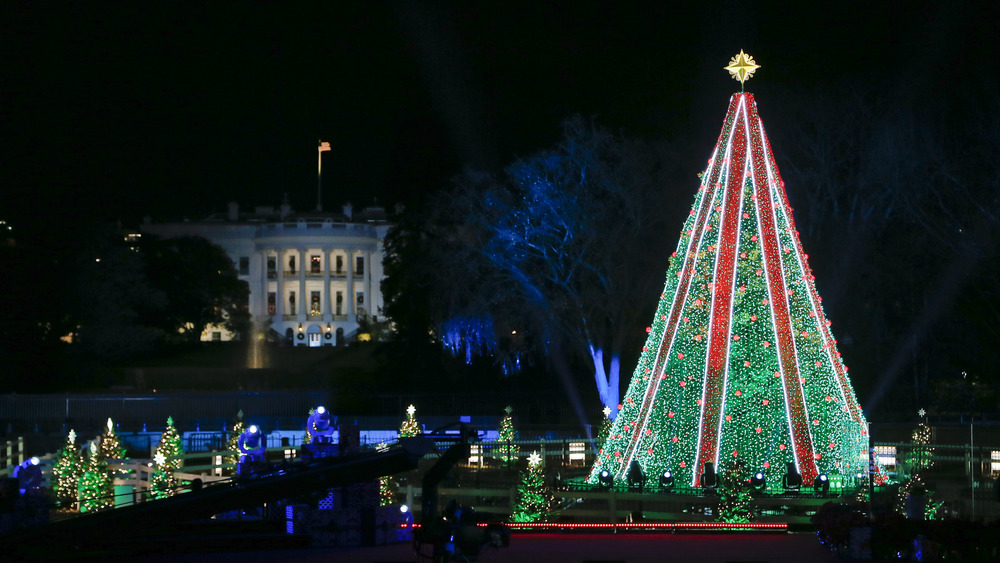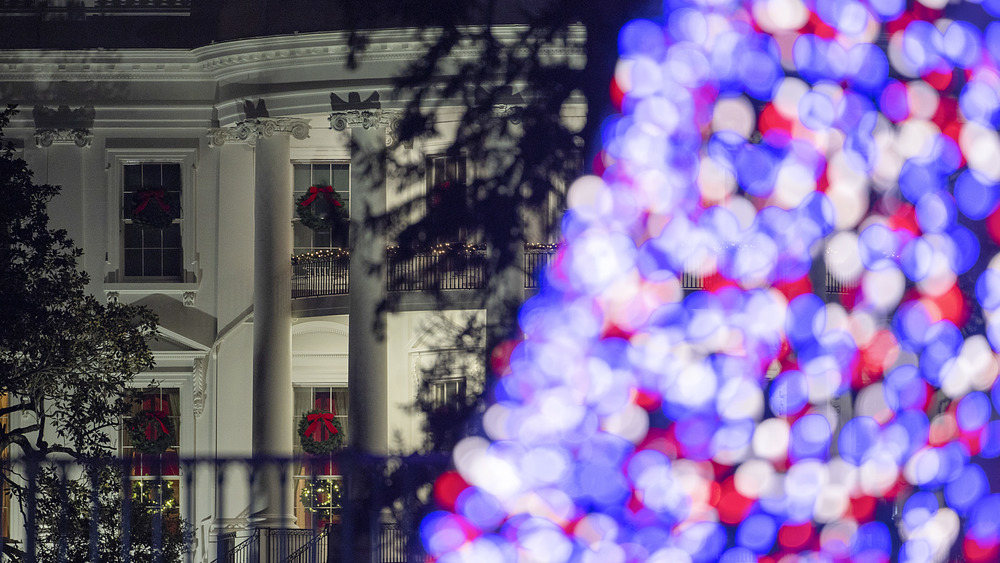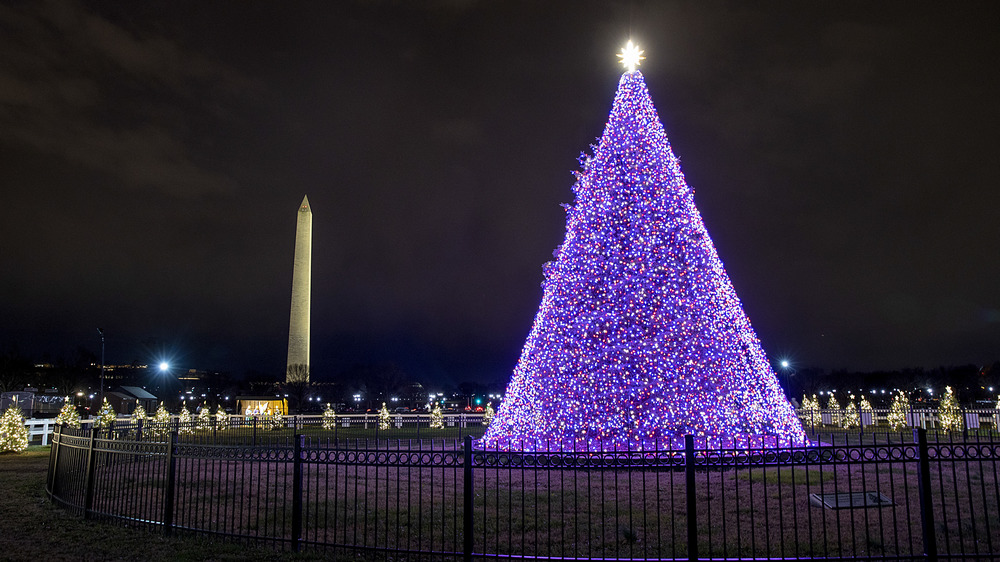The National Christmas Tree Was Actually A Scheme To Sell This Product
According to the official website of the National Christmas Tree, its purpose is "to bring citizens together to share in a message of hope and peace." For the last 97 years, the tree has been lit up with thousands of shining Christmas lights to supposedly spread holiday cheer. "Through peace and war, from national celebration to national mourning," reads the website, "Americans have gathered together and celebrated the season in this holiday event." This warm, friendly language sounds nice and jolly — rhetoric just right for this hopeful time of year. The true history behind the National Christmas Tree, however, doesn't exactly square with the rosy narrative the National Park Foundation would like you to believe.
For example, after its inaugural lighting in December 1923, Time reported that the "assembled magnitude" that gathered outside the White House to watch it be lit up to a soundtrack of a caroling choir was not as inclusive as those statements sound. The magnitude that came together at 9 p.m. that night was made of up all white people. African-American carolers weren't allowed to come and sing until after midnight.
But that's not the only difference between the National Tree's actual history and the one we like to tell ourselves. Although it may now serve as symbol of goodwill (to those Americans who celebrate the holiday, at least), the original motives behind the tradition weren't necessarily to promote peace on Earth and goodwill to men.
The National Christmas Tree was meant to electrify the country's holiday traditions
As Time remembered in 2016, the idea for the National Christmas Tree came from a man named Frederick M. Feiker. He was the assistant to Herbert Hoover, who was Secretary of Commerce at the time. Feiker was the vice president of the Society for Electrical Development, and he wanted the event to prompt Americans to start trimming their trees with electric lights in order to spread holiday cheer. According to the Times Argus of Barre Montpelier, Vermont, Americans primarily used candles to decorate their trees in the early 1920s. Electric lights were still a luxury. Feiker was out to change that.
So they decked out an evergreen in $5,000 dollars' worth of red, green, and white bulbs (the equivalent of over $75,000 in 2020, according to the U.S. Bureau of Labor Statistics), and had President Calvin Coolidge turn them on and start a new American tradition. Feiker wrote in a letter to his daughter a decade later that the society of which he was the vice president "was interested to have as many people use electric lights at Christmas as possible, so I thought of this idea of having the National Christmas Tree at Washington, which would stimulate other people to have outdoor Christmas trees. In order to get this started, we had to get the President of the United States to light the tree." Looks like the plan worked.
The National Christmas Tree's decorations became the standard in American homes
"If you get the President of the United States two years in succession to do a thing, he will always do it," wrote Feiker. And in 1924, he almost didn't get the president to do the thing for a second time. Coolidge almost put the kibosh on the ceremony, because he was against cutting down a tree to do so (remember when presidents gave a hoot about the environment?). But he agreed to a second National Christmas Tree when it was decided they would use a living tree.
So Feiker had his second electrified National Tree, and his prediction turned out to be right. The tradition has continued ever since. The ceremony to promote new Christmas decorations was part of the larger trend of the electrification of the United States in the 1920s. In his book Made in the USA: The Rise and Retreat of American Manufacturing, Vaclav Smith wrote that the decade was a turning point in the country's connection to electricity. Just under 35 percent of U.S. households were connected to the grid in 1920, and a decade later that number had risen to 68 percent. So it looks like Feiker and his industry players got what they wanted. But despite his ulterior motive, none of us are really complaining, are we? Who doesn't love electric lights during the holidays?


